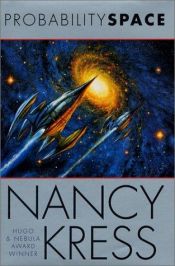Probability space
Blurb
In probability theory, a probability space or a probability triple is a mathematical construct that models a real-world process consisting of states that occur randomly. A probability space is constructed with a specific kind of situation or experiment in mind. One proposes that each time a situation of that kind arises, the set of possible outcomes is the same and the probabilities are also the same.A probability space consists of three parts:
A sample space, Ω, which is the set of all possible outcomes.
A set of events, where each event is a set containing zero or more outcomes.
The assignment of probabilities to the events; that is, a function P from events to probabilities.
An outcome is the result of a single execution of the model. Since individual outcomes might be of little practical use, more complex events are used to characterize groups of outcomes. The collection of all such events is a σ-algebra . Finally, there is a need to specify each event's likelihood of happening. This is done using the probability measure function, P.
Once the probability space is established, it is assumed that “nature” makes its move and selects a single outcome, ω, from the sample space Ω.

 English
English Español
Español Deutsch
Deutsch










Member Reviews Write your own review
Be the first person to review
Log in to comment